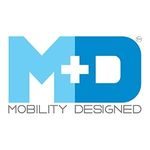
Please bear with us while we make some changes.
Thank you for visiting the
Mobility Designed website.
We are currently transitioning for expansion and will not be selling any new products or replacement parts at this time.
We recognize the inconvenience this may cause our M+D product users. We anticipate having new stock later in the year so check back for updates.
Please direct any warranty issues to us via email to info@mobilitydesigned.com and we will work with you.
We are just as eager as you are to get our life-changing designs back out in the world and look forward to engaging with you again soon.
Thank you for your support and understanding.
M+D Team